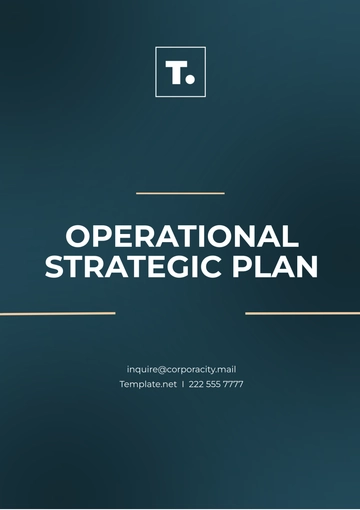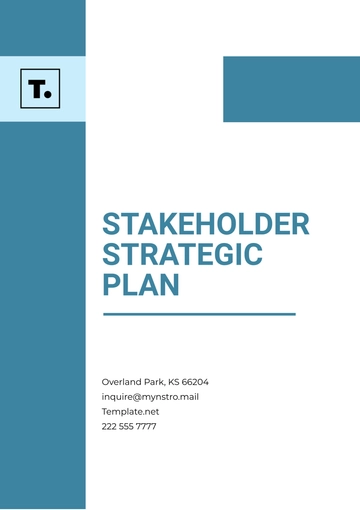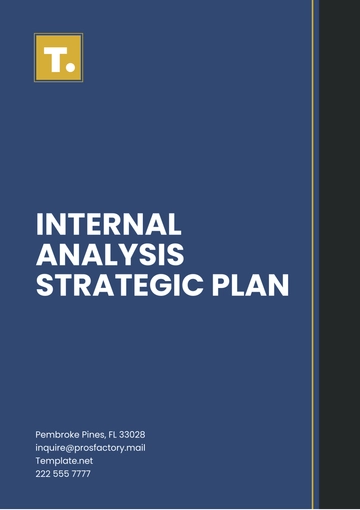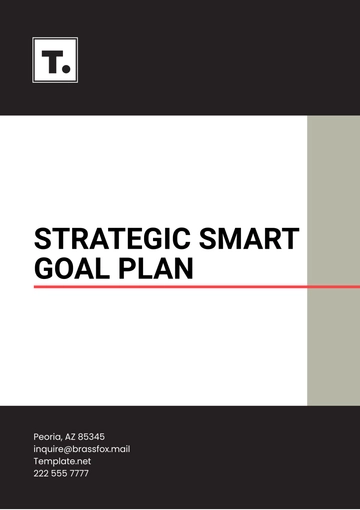Free Campaign Sales Strategic Plan

Prepared by: [Your Name]
Date: February 5, 2060
I. Executive Summary
This Campaign Sales Strategic Plan provides a comprehensive roadmap for launching our innovative product line in Q1 2061. With a focus on maximizing sales performance and market penetration, the plan outlines targeted strategies to drive revenue growth and enhance brand visibility. By leveraging digital marketing, strategic partnerships, and effective sales promotions, we aim to position our products as market leaders in an increasingly competitive landscape.
II. Campaign Objectives
Achieve a 25% Increase in Sales Volume: Targeting a sales boost by the end of Q2 2061 through focused outreach and customer engagement.
Expand Customer Base by 15%: Implement strategies to attract new customers, particularly within the millennial and Gen Z demographics.
Increase Brand Awareness by 30%: Elevate brand presence in the market segment through impactful marketing campaigns and community engagement by the end of Q3 2061.
Enhance Customer Retention by 20%: Implement loyalty programs and customer feedback loops to strengthen relationships with existing clients.
III. Target Audience
Our campaign will strategically target the following segments to ensure alignment with their needs and preferences:
Millennials and Gen Z (Ages 18-35): Tech-savvy consumers who prioritize innovation and sustainability. This group values authenticity and is influenced by social media trends.
Small to Medium-Sized Enterprises (SMEs): Business owners looking for efficient, cost-effective solutions that enhance productivity and operational effectiveness.
Eco-Conscious Consumers: Individuals who prioritize sustainable practices in their purchasing decisions, seeking products that minimize environmental impact.
IV. Market Analysis
A. Market Trends
Sustainability: There is a growing consumer preference for eco-friendly products, with 70% of consumers willing to pay more for sustainable options.
Digital Shopping Growth: E-commerce continues to expand, with a projected increase of 20% in online sales in 2061, necessitating a robust online presence.
B. Competitive Analysis
Key competitors include Tech Innovators Inc., Green Solutions Ltd., and Future Tech Corp. Each presents unique strengths, such as established customer bases and extensive marketing resources.
Our competitive edge will be derived from innovative product features, exceptional customer service, and a commitment to sustainability, differentiating us in a crowded marketplace.
V. Sales Strategies
Digital Marketing Initiatives:
Launch targeted social media advertising campaigns on platforms like Instagram and TikTok to engage younger audiences.
Utilize search engine optimization (SEO) and content marketing to enhance our online presence and attract organic traffic.
Sales Promotions:
Implement time-limited promotions, such as introductory discounts and exclusive offers for early adopters, to drive immediate sales.
Establish a referral program that rewards existing customers for bringing in new clients, enhancing word-of-mouth marketing.
Strategic Partnerships:
Collaborate with influencers and thought leaders in the tech and sustainability sectors to expand brand reach and credibility.
Explore partnership opportunities with eco-friendly organizations to align our brand with sustainability initiatives, enhancing our appeal to target audiences.
VI. Budget
Item | Estimated Cost | Description |
|---|---|---|
Digital Marketing Campaign | $150,000 | Comprehensive online advertising and promotions. |
Sales Promotions | $50,000 | Discounts, referral incentives, and loyalty programs. |
Partnerships and Sponsorships | $30,000 | Collaborations with influencers and events. |
Market Research | $20,000 | Analysis of customer preferences and market trends. |
Total Budget | $250,000 | Total financial allocation for the campaign. |
VII. Timeline
Milestone | Date | Description |
|---|---|---|
Campaign Kickoff | January 15, 2061 | The official start of the campaign preparations. |
Launch of Digital Marketing | February 1, 2061 | Initiate digital marketing efforts. |
Product Launch | March 15, 2061 | Official introduction of the new product. |
Mid-Campaign Review | April 30, 2061 | Assess performance and make necessary adjustments. |
Final Evaluation | July 15, 2061 | Comprehensive analysis of campaign outcomes. |
VIII. Metrics for Success
Sales Volume: Track progress toward the 25% increase goal through regular sales reports.
Customer Acquisition Rate: Measure growth against the 15% target by monitoring new customer sign-ups and sales.
Brand Awareness: Utilize surveys and social media analytics to gauge the 30% improvement in brand recognition.
Customer Retention Rate: Analyze repeat purchase rates and customer feedback to assess progress toward the 20% retention goal.
IX. Evaluation and Adjustment Plan
The campaign’s performance will be monitored through bi-weekly reviews of sales data, customer feedback, and marketing metrics. Key performance indicators (KPIs) will guide decision-making, allowing for timely adjustments to strategies as needed. A final evaluation will occur post-campaign to assess overall effectiveness, document lessons learned, and inform future initiatives. This approach ensures continuous improvement and alignment with market demands.
- 100% Customizable, free editor
- Access 1 Million+ Templates, photo’s & graphics
- Download or share as a template
- Click and replace photos, graphics, text, backgrounds
- Resize, crop, AI write & more
- Access advanced editor
Optimize your sales campaigns with the Campaign Sales Strategic Plan Template from Template.net. Fully editable and customizable, this template allows you to develop focused sales campaigns that meet your business objectives. Editable in our Ai Editor Tool, it’s simple to tailor your campaign strategies to various products, audiences, or timelines. Plan and implement successful sales campaigns with confidence





























